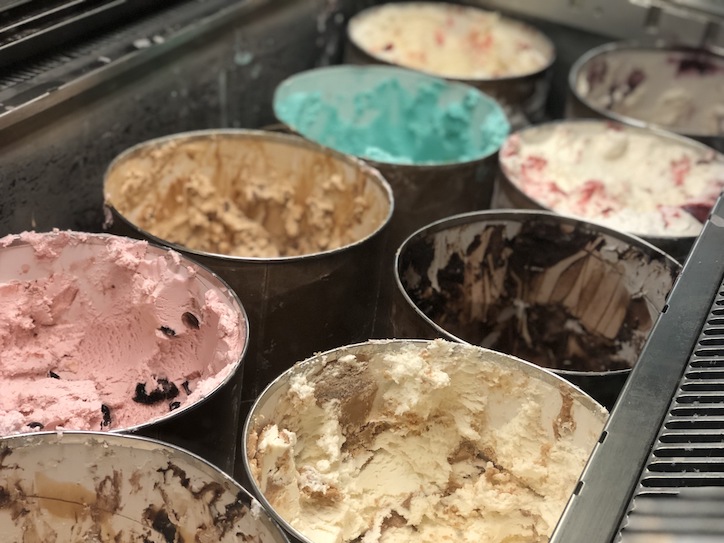Last week, the Florida Department of Agriculture and Consumer Services (FDACS) revealed that Listeria had been found in 10 environmental swabs and samples from 16 different flavors of ice cream at Big Olaf Creamery’s production plant in Sarasota, FL.
The samples were collected after the Centers for Disease Control and Prevention (CDC) announced on July 2 that epidemiological evidence identified the ice cream as the source of a Listeria outbreak that has sickened 23 people over an 18-month period. One of the patients died and another suffered a miscarriage.
Presented with that information, Big Olaf declined to issue a recall. Then a spokesperson for the company issued a statement that deemed the epidemiological information “speculative” and wondered why the company was being unfairly “targeted.”
But on July 13, when FDACS released the results of the environmental tests and issued a “stop sales” order, Big Olaf had a change of heart and issued a recall that same day. The tests revealed that Listeria was found:
- On two conveyor cross-beams between machines
- On two floor drains
- On a squeegee in a sink
- On a metal floor support between machines
- Inside two pipes that transfer premix to the ice cream machine
- Inside a transfer pump outlet on a pasteurized ice cream cooler
“Those last two locations stood out to us as posing a potentially disastrous level of risk,” said Eric Hageman, Listeria lawyer and publisher of Food Poisoning Bulletin. “Those are direct product contact surfaces.”
Two days after the environmental tests were made public, FDACS released product test results showing 16 of 17 ice cream flavors sampled were positive for Listeria.
Dairy products are one the leading cause of Listeria outbreaks in the U.S., according to the Centers for Disease Control and Prevention. Unlike other bacteria, Listeria thrives in cool places and in areas where moisture collects. Companies that make food are supposed to have controls in place to monitor and control for Listeria and other foodborne pathogens.
With the amount of Listeria found at Big Olaf Creamery this month and the number of illnesses reported over an 18-month period, it would seem like a safe bet that Listeria had turned up on previous FDACS inspections.
But it didn’t.
The reason? Collecting environmental swabs and product samples for testing isn’t a standard part of the routine inspections by state officials. There are 22 categories on the form. They include checking the physical features of the plant, pasteurization temperatures, record-keeping, and the condition and cleanliness of the equipment, the packaging area, the vehicles, and the general surroundings.
Food Poisoning Bulletin received five years of quarterly inspections from FDACS, from January 2017 to January 2022. Of the 21 reports:
- Fifteen had perfect scores, no violations
- One was not applicable because the plant was temporarily closed due to the pandemic.
- Three had one violation for storing ingredients on the floor of the freezer.
- One had a violation for not keeping the door to the production area closed at all times (to keep out flies and pests.)
- One had two violations for a ceiling tile that needed replacing and bare wood that needed paint.
Federal inspections didn’t reveal much more. The U.S. Food and Drug Administration (FDA) has two Big Olaf inspections posted on its website. One in 2014 and one in 2019. In both years, there was a violation for a “foodborne biological hazard.” The more serious of the two occurred in 2014 and required voluntary action not mandatory official action. That year there were also two other violations one for food and color additives, the other was pesticide-related.

A Scoop of Deja Vu
If this is sounding a little familiar, there’s a reason for that. In 2015, when a deadly multistate Listeria outbreak was linked to Blue Bell ice cream, the same thing happened. The Associated Press obtained copies of state inspection records. “Days after a foodborne illness was linked to Blue Bell ice cream products, a state inspection of an Oklahoma plant later tied to the infection praised the facility for having no violations and doing a “great job,” the report stated.
Food Poisoning Bulletin followed the reporting with the FDA’s findings of a Blue Bell plant. Like the Big Olaf reports, FDA’s Blue Bell inspections focussed on observable violations such as dripping pipes and accumulated residue. Inspectors weren’t testing for Listeria until the outbreak gave them a reason to.
The outbreaks have other similarities, too. Both of them were detected by CDC’s PulseNet, a national database of the genetic fingerprints of pathogens that cause reportable illnesses such as E. coli, Salmonella, Campylobacter, and Listeria. Both outbreaks took place over extended timelines, Big Olaf, 18 months, and Blue Bell, four years.
Distinct illness clusters were also a feature of both outbreaks. The CDC says illness clusters are “defined as two or more people who do not live in the same household who report eating food from the same retail location before becoming ill.” And they are an indicator that a contaminated food item was served or sold at that establishment. Three illness clusters in this outbreak were at retail locations that sell Big Olaf ice cream.
Finally, in both outbreaks, the ice cream was served at senior housing communities or long-term care facilities. Listeria poses a heightened risk to seniors and pregnant women. In the Big Olaf outbreak, half of the people sickened are between the ages of 72 and 92.

If you have been sickened with a Listeria infection, please contact our experienced attorneys for help with a possible lawsuit at 1-888-377-8900 or 612-338-0202.




